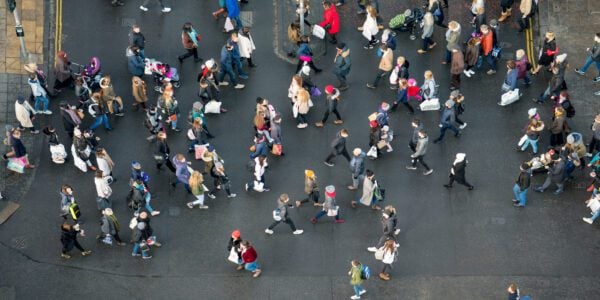
01/11/18
3 min read
Children from poorer backgrounds now have more spent on their education than do those from better-off families, according to new Nuffield-funded research from the IFS published today.
Children from richer families used to benefit much more from public spending on education than did those from poorer backgrounds. Back in the 1980s, this gap was very big as few poorer children stayed in education past age 16, let alone went on to higher education. Even among those taking their GCSEs in 2003, those from the richest fifth of families were getting nearly £6,000 more spent on their education than were those from the poorest fifth. That gap had closed for the generation taking GCSEs in 2010.
This remarkable shift in the distribution of education spending has been driven by increases in the amount of funding targeted at poorer pupils, as well as by a narrowing of socio-economic gaps in post-16 and higher education participation. Policies such as the pupil premium and further narrowing of socio-economic gaps in higher education participation mean that education spending is now likely to be skewed towards poorer pupils.
The IFS researchers followed pupils in state-funded schools in England who took their GCSEs between 2003 and 2010 through their education careers and measure the amount of spending they received based on the institutions they attended.
The main findings are as follows:
- School funding has become much more targeted at poorer pupils. In 2003, there was already a £3,500 funding advantage in total school funding in favour of pupils from poorer families (looking over 12 years of schooling). This grew to £9,500 by 2010, such that pupils in the poorest fifth of households received 20% more funding on average while at school than did those from the richest fifth. This was the intended and direct result of reforms to the school funding system over the 2000s.
- Participation in 16–18 education is now near universal. In the late 1980s, children from richer families were about twice as likely to stay on in education after age 16 as those from poorer families, a gap of over 35 percentage points.In 2003, pupils from richer families were about 11 percentage points more likely to stay in 16–18 education than those from poorer families. By 2010, participation was over 95% across all groups. Socio-economic gaps in 16–18 funding narrowed as a result.
- Socio-economic gaps in higher education participation have narrowed slightly and reduced funding gaps. Amongst pupils taking their GCSEs in 2003, children from richer families were about 33 percentage points more likely to go on to higher education than those from poorer families. This gap was down to 28 percentage points for those who took their GCSEs in 2010. As a result, pupils from richer families on average benefited from about double the level of higher education spending received by those from poorer families, down from three times as much in 2003.
- The abolition of tuition fees would benefit students from the richest fifth of households by more than twice as much as those from the poorest fifth. That’s because richer pupils are more likely to go to higher education and earn more as graduates themselves.
- Socio-economic differences in total education spending evaporated by 2010. Amongst pupils taking their GCSEs in 2003, those in the richest quintile received about £5,900 more than those in the poorest quintile. By 2010, pupils in the richest and poorest socio-economic quintiles each received about £73,000 in total spending.
- Reforms since 2010 will have increased total funding in favour of pupils from poorer backgrounds. The pupil premium was introduced from 2011 onwards. Reforms to post-16 funding have tended to favour colleges, which poorer pupils are more likely to attend, rather than school sixth forms. Socio-economic gaps in higher education participation have fallen slightly over time, though these remain substantial.
Luke Sibieta, co-author of the report and Research Fellow at IFS, said: “In less than a decade over the 2000s, education spending shifted from being skewed towards richer pupils to being skewed towards poorer pupils instead. This is a remarkable shift in the shape of public spending, with an increasing amount of redistribution taking place through public service spending. In more recent years, these changes will have been partly counterbalanced by reductions in welfare spending and children’s services. Nevertheless, the empirical evidence suggests that focusing more education spending on poorer pupils should lead to substantial improvements in their life chances.”




















































